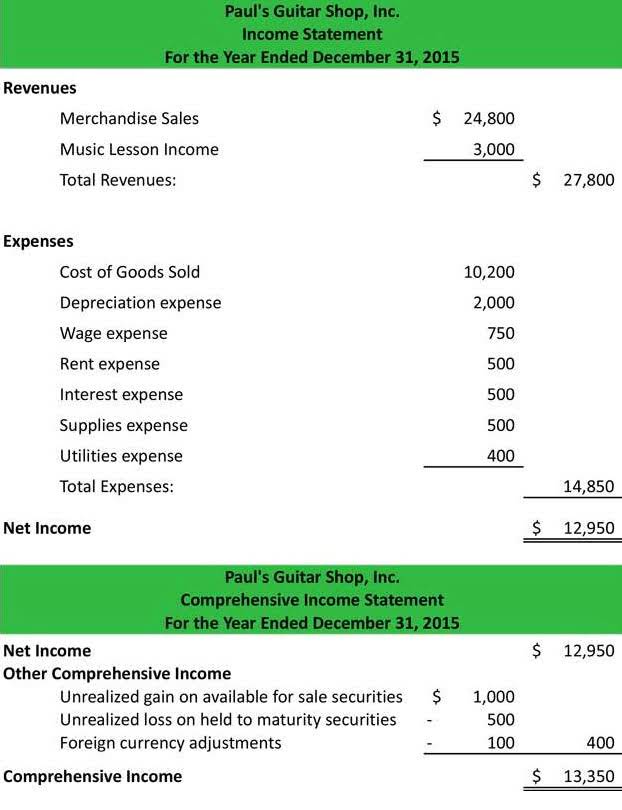
Below, we’ve highlighted some top accounting software solutions to help you choose the right accounting software for your business Accounting For Architects and make it easy to maintain your accounting cycle. The closing entry process involves transferring your net income to retained earnings. When earnings are transferred, all temporary accounts should be closed. As soon as the transaction occurs it is the responsibility of an accountant to record such a transaction in subsidiary books. Accounting transaction should be recorded in the books according to the accounting policies, principles followed by such entity.
The Best Small Business Accounting Software in 2025

Since this is the final step before creating financial statements, you should double-check everything with the help of a new adjusted trial balance. After accountants and management analyze the balances on the unadjusted trial balance, they can then make end of period adjustments like depreciation expense and expense accruals. These adjusted journal entries are posted to the trial balance turning it into an adjusted trial balance. The accounting cycle is a collective process of identifying, analyzing, and recording the accounting events of a company. It is a standard 8-step process that begins when a transaction occurs and ends with its inclusion in the financial statements and the closing of the books.
- In the first step of the accounting cycle, you’ll gather records of your business transactions—receipts, invoices, bank statements, things like that—for the current accounting period.
- After completion of the posting of entries to ledgers, we need to prepare a trial balance.
- The last step in the accounting cycle is to make closing entries by finalizing expenses, revenues and temporary accounts at the end of the accounting period.
- These expenses and revenues are compared to reveal the net income earned or net loss sustained by the entity during the period.
- Some accountants prefer to make a reversing entry at the start of the following accounting period in order to reverse specific adjusting entries.
- Your accounting type and method determine when you identify expenses and income.
- Bookkeeping events are sales, refunds, bill payments from accounts payable, and any other financial transactions in your business.
h Step of the Accounting Cycle: Insights on Adjusted Trial Balance
There are many essential parts of your business’s operations and keeping accurate financial records is fundamental among them. Let accounting software work behind the scenes to perform critical tasks. You can then use your time and resources to make strategic decisions with the information you’ve gathered from these key reports. Ultimately, understanding and executing the accounting cycle properly empowers you to steer your business toward greater financial stability. These financial statements are the most significant outcome of the accounting cycle and are crucial for anybody interested in comparing your business’s performance with others.
Accounting software and the accounting cycle
Once you check off all the steps, you can move to the next accounting period. These are all key business activities that involve the generation of revenue and incurrence of expenses in support of revenue-generated activities. You can then show these financial statements to your lenders, creditors and investors to give them an overview of your company’s financial situation at the end of the fiscal year. You need to perform these bookkeeping tasks throughout the entire fiscal year.
- The accounting cycle is important because it gives companies a set of well-planned steps to organize the bookkeeping process to avoid falling into the pitfalls of poor accounting practices.
- Following the accounting cycle is a standard practice that helps to ensure that all financial transactions are accounted for.
- This credit needs to be offset with a $25,000 debit to make the balance zero.
- General ledger accounts are often referenced on financial statements.
- After creating the respective statements, the accountants analyze the same to figure out some trends indicated through the recorded accounting activities.
Meanwhile, cash accounting involves looking for transactions whenever cash changes hands. Companies can modify the accounting cycle’s steps to fit their business models and accounting procedures. One of the major modifications you can make is the type of accounting method used. what is accounting cycle Organizations may follow cash accounting or accrual accounting or choose between single-entry and double-entry accounting. At the end of the accounting period, companies must prepare financial statements. Public entities need to comply with regulations and submit financial statements before specified deadlines.
Bookkeepers analyze the transaction and record it in the general journal with a journal entry. The debits and credits from the journal are then posted to the general ledger where an unadjusted trial balance can be prepared. The accounting cycle is a comprehensive accounting process that begins and ends in an accounting period. It involves eight steps that ensure the proper recording and reporting of financial transactions. Once a company’s books are closed and the accounting cycle for a period ends, it begins anew with the next accounting period and financial transactions. The third step of the accounting process is to post those journal entries into ledger accounts.

It’s a systematic process businesses use to identify, record, and analyze their financial data. Think of it as the backbone of any business’s financial management, ensuring everything unearned revenue stays in order, from the smallest coffee receipt to the largest client invoice. The accounting cycle is a process businesses use to track their financial performance over a specific period of time. The last and final phase of bookkeeping is the preparation of the post-closing trial balance.
Step 6: Prepare an Adjusted Trial Balance
- The cycle incorporates all the organization’s accounts, including T-accounts, credits, debits, journal entries, financial statements and book closing.
- Therefore, transactions are defined as events that are measured in monetary terms and for which the financial position of an organization changes.
- The accounting cycle documentation differs from the year-end book, which the accounting department prepares once it has closed the books at the end of the fiscal year.
- Some have a monthly accounting period, while others only report on an annual basis.
- We collaborate with business-to-business vendors, connecting them with potential buyers.
These journal entries are known as adjusting entries, which ensure that the entity has recognized its revenues and expenses in accordance with the accrual concept of accounting. The accounting cycle is the backbone of financial management and reporting. Here’s an in-depth look at the accounting cycle, including the eight primary steps involved and how accounting software can help. Now that all the end of the year adjustments are made and the adjusted trial balance matches the subsidiary accounts, financial statements can be prepared.

A typical accounting cycle is a 9-step process, starting with transaction analysis and ending with the preparation of the post-closing trial balance. This is the final check to ensure all temporary accounts are closed and your debits still equal your credits. The post-closing trial balance only includes permanent accounts, like assets, liabilities, and equity. At the end of every accounting period, some transactions are missed from the records. The recording of such transactions in the books of accounts is known as adjusting entries.
